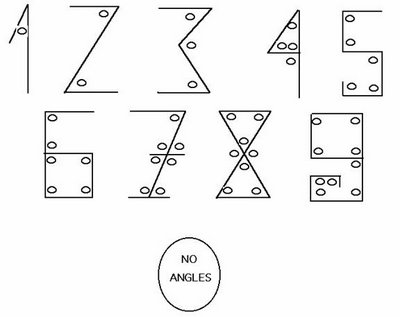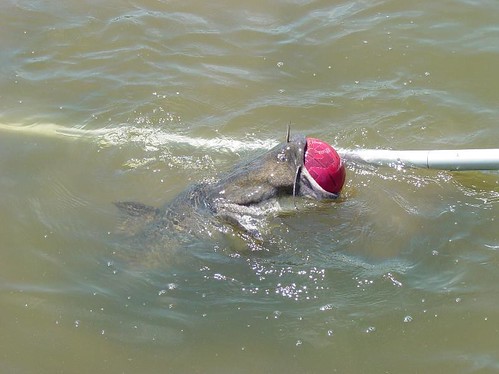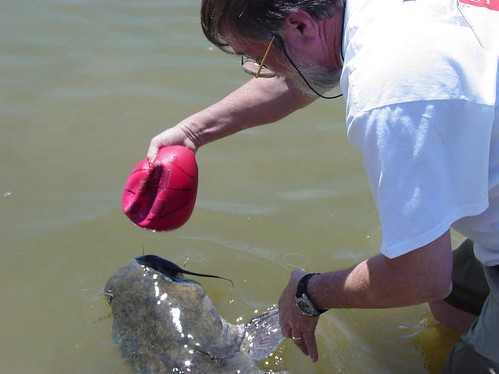 |
Death by Embracing the Reflection of the
Moon
Chinese poet Li Po (701-706) is regarded as one of the two
greatest poets in Chinas literary history. He was well known for
his love of liquor and often spouted his greatest poems while
drunk.
One night, Li Po fell from his boat and drowned in the Yangtze
River while trying to embrace the reflection of the moon in the
water. |
 |
Death by Beard
Austrian Hans Steininger was famous for having the worlds
longest beard (it was 4.5 feet or nearly 1.4 m long) and for dying
because of it.
One day in 1567, there was a fire in town and in his haste Hans
forgot to roll up his beard. He accidentally stepped on his beard,
lost balance, stumbled, broke his neck and died! |
 |
Death From Holding a Pee In
Danish nobleman and astronomer Tycho Brahe
[wiki] was one interesting fellow. He kept a dwarf as a court jester
who sat under the table during dinner. He even had a tame pet
moose.
Tycho also lost the tip of his nose in a duel with another Danish
nobleman and had to wear a "dummy" nose made from silver and gold,
but thats another story.
It was said that Tycho had to hold his pee during one
particularly long banquet in 1601 (getting up in the middle of a
dinner was considered really rude) that his bladder, strained to its
limits, developed an infection which later killed him!
Later analyses suggested that Tycho died because of mercury
poisoning but thats not nearly as interesting as the original
story. |
 |
Death by Conductors Cane
While conducting the hymnal Te Deum for French King
Louis XIV in 1687, Jean-Baptiste Lully was so focused in keeping the
rhythm by banging a staff against the floor (this was the method
before conductors baton came into use), that he struck his toe hard
but refused to stop.
The toe developed an abscess, which later turned gangrenous, but
Lully refused to have it amputated. The gangrene spread and killed
the stubborn musician.
Ironically, the hymn he was conducting was in celebration of the
recovery of Louis XIV from an illness. |
 |
Death by Dessert
King Adolf
Frederick [wiki] of Sweden loved to eat and died from it
too!
The "King Who Ate Himself to Death" died in 1771 at the age of 61
from a digestive problem after eating a giant meal consisting of
lobster, caviar, saurkraut, cabbage soup, smoked herring, champagne
and 14 servings of his favorite dessert: semla [wiki], a bun
filled with marzipan and milk. |
 |
Death by Jury Demonstration
After the Civil War, controversial Ohio politician Clement
Vallandigham [wiki] became a highly successful lawyer who rarely
lost a case.
In 1871, he defended Thomas McGehan who was accused of shooting
one Tom Myers during a barroom brawl. Vallandigham s defense was
that Myers had accidentally shot himself while drawing his pistol
from a kneeling position.
To convince the jury, Vallandigham decided to demonstrate his
theory. Unfortunately, he grabbed a loaded gun by mistake and ended
up shooting himself!
By dying, Vallandigham succeeded in demonstrating the
plausibility of the accidental shooting and got his client
acquitted. |
 |
Death from Biting Ones Tongue
Allan
Pinkerton (1819-1884)[ wiki], famous for creating the Pinkerton
detective agency and developing investigative techniques such as
surveilling a suspect and doing undercover work, died of an
infection after biting his tongue when he slipped on a
sidewalk! |
 |
Death from Stubbing Ones Toe
Famous Tennessee whiskey distiller Jack Daniel
[wiki] decided to come in to work early one morning in 1911. He
wanted to open his safe but couldnt remember the combination. In
anger, Daniel kicked the safe and injured his toe, which later
developed an infection that killed him!
Moral of the story? Dont go to work early. |
Death by Orange Peel

Bobby
Leach [wiki] wasnt afraid to court death: in 1911, he was the
second person in the world to go over Niagara Falls in a barrel. The
daredevil went on to perform many other death-defying stunts, so his
death is especially ironic.
One day while walking down a street in New Zealand, Leach slipped
on a piece of orange peel. He broke his leg so badly it had to be
amputated. Leach died due to complications that developed
afterwards. |
 |
Death by Overcoat Parachute Failure
In 1911, French tailor Franz
Reichelt decided to test his invention, a combination overcoat
and parachute, by jumping off the Eiffel Tower. Actually, he told
the authorities that he would use a dummy, but at the last minute
decided to test it himself. It was no surprise that he fell to his
death.
Theres even a YouTube clip of
his fatal jump. |
 |
Death by 1) Poison, 2) Gunshot Wound (4x), 3) Beating by
Clubs, 4) Drowning.
According to legends, Russian mystic Grigori Rasputin (1869-1916)
was first poisoned with enough cyanide to kill ten men, but he
wasnt affected.
So his killers shot him in the back with a revolver. Rasputin
fell but later revived. So, he was shot again three more times, but
Rasputin still lived. He was then clubbed, and for good measure
thrown into the icy Neva River.
Rasputin was finally dead for good. |
 |
Death by Baseball
Cleveland Indians shortstop Ray Chapman
[wiki] was the only man
ever killed by a baseball pitch.
At that time, baseball pitchers dirtied up a ball before it was
thrown at the batter to make it harder to see. On August 6, 1920 in
a game against the New York Yankees, Carl Mays pitched such a ball
towards Chapman that fatally hit his skull. |
 |
Death by Scarf
"Mother of modern dance" Isadora
Duncan [wiki] was killed in 1927 by her trademark scarf she
loved to wear:
As the New York Times noted in its obituary of the dancer
on 15 September 1927, "The automobile was going at full speed when
the scarf of strong silk began winding around the wheel and with
terrific force dragged Miss Duncan, around whom it was securely
wrapped, bodily over the side of the car, precipitating her with
violence against the cobblestone street. She was dragged for
several yards before the chauffeur halted, attracted by her cries
in the street. Medical aid was summoned, but it was stated that
she had been strangled and killed
instantly."
|
Death by Garbage

Homer and
Langley Collyer [wiki] were compulsive hoarders. The two
brothers had a fear of throwing anything away and obsessively
collected newspapers and other junk in their house. They even set up
booby-traps in corridors and doorways to protect against
intruders.
 In 1947, an anonymous tip called that there was a dead In 1947, an anonymous tip called that there was a dead
body in the Collyer house, and after much initial difficulty getting
in, the police found Homer Collyer dead and Langley no where to be
found. About two weeks later, after removing nearly 100 tons of
garbage from the house, workers found Langley Collyers partialy
decomposed (and rat-chewed) body just 10 feet away from where they
had found his brother.
Apparently, Langley had been crawling through tunnels of
newspapers to bring food to his paralyzed brother when he set off
one of his own booby-traps. Homer died several days later from
starvation. |
|
Death at a Talk Show
Jerome
Irving Rodale [wiki] was a proponent of healthy eating. He was
an early advocate for organic farming and sustainable agriculture,
founder of Organic Farming and Gardening magazine and Rodale
Press.
After bragging that he would "live to 100, unless Im run down by
a a sugar-crazy taxi driver", Rodale died of a heart attack while
being interviewed on the Dick Cavett Show in 1971. Appearing fast
asleep, Dick Cavett joked "Are we boring you, Mr. Rodale?" before
discovering that his 72-year-old guest had indeed died. The show was
never aired. |
 |
Death by Suicide During a Live TV News
Broadcast
Christine
Chubbuck [wiki] was the first and only TV news reporter to
commit suicide during a live television broadcast.
On July 15, 1974, eight minutes into the broadcast, the depressed
reporter said "In keeping with Channel 40s policy of bringing
you the latest in blood and guts, and in living color, you are going
to see another first: an attempted suicide." With that,
Chubbuck drew up a revolver and shot herself in the head. |
 |
Death on the Toilet
There are several examples of death on the toilet, but that of
Elvis Presley (1935 - 1977) was the most famous.
The King of Rock n Roll was found lying on the floor of his
Graceland mansions bathroom after throwing up while being seated on
the toilet, taking care of business.
Doctors attributed his death to a heart attack from weight gain
and taking too many prescription drugs. |
 |
Death by Robot
Robert
Williams [wiki] was the first man ever killed by a robot. On
January 25, 1979, Williams climbed into a storage rack at the Ford
Motors Flat Rock casting plant to retrieve a part because the
parts-retrieval robot malfunctioned. Suddenly, the robot reactivated
and slammed its arm into Williams head, killing him instantly.
The second death by robot happened just a couple of years
afterwards in 1981. Kenji Urada
[wiki], a 37-year-old Japanese maintenance engineer was working on a
broken robot at a Kawasaki plant when he failed to turn it off. The
robots mechanical arm accidentally pushed him into a grinding
machine. |
 |
Death by Decapitation by Helicopter Rotor
Blades
Actor Vic
Morrow [wiki] died on the set of Twilight Zone: The
Movie when a helicopter spun out of control due to special
effect explosions, crashed, and decapitated
him with its rotor blades.
Two other child actors also died at the event, which triggered a
massive reform in US child labor laws and safety regulations on
movie sets. |
 |
Death by Cactus
In 1982, 27-year-old David
Grundman and a roommate decided to do a little "cactus
plugging," by shooting the desert plant with a shotgun.
The first one, a small cactus, went off without a hitch and
Grundman was encouraged to try a larger prey: a 26-foot-tall Saguaro
cactus, probably a 100-year-old plant. Unfortunately, Grundman
blasted off a large chuck of the cactus that fell on him and crushed
him to death!
To date, this was probably the only known instance of revenge
killing by a plant. |
 |
Death by Bottle Cap
American playwright Tennessee
Williams [wiki] died in 1983 after he choked on a bottle cap in
his hotel room. Yes, he had been drinking. |
|
Death by Drowning at a Lifeguards Party.
In 1985, to celebrate their first drowning-free season ever, the
lifeguards of the New Orleans recreation department decided to throw
themselves a party.
When the party ended, a 31-year-old guest named Jerome
Moody was found dead on the bottom of the recreation
departments pool.
We suppose when its your time to go, then its your time to go:
there were four lifeguards on duty and more than half of the 200
party-goers were themselves lifeguards! |
|
Death on Stage, While Telling a Joke
Dick Shawn (1924-1987) was a comedian who had a heart attack and
died during a joke that seemed strangely appropriate:
He was making fun of politicians by saying campaign cliches
ending with "I will not lay down on the job!" Shawn then laid down
on the floor face down. At first, the audience thought that it was
all part of the show, until some time later a theater employee
checked him for a pulse and began administering CPR.
The paramedics then arrived, and the audience were told to go
home - Dick Shawn was dead. |
|
Death by Belly Slam.
British pro wrestler Mal "King Kong" Kirk died underneath the big
belly of Shirley "Big Daddy" Crabtree.
In August 1987, during the final moments of the match, Crabtree
delivered his signature "Belly-Splash" move (basically jumping up
and down, slamming his belly onto a guy) on Kirk, who then had a
heart attack and died.
Crabtree was cleared after it was revealed that Kirk had a
serious heart condition prior to the match. However, Crabtree blamed
himself for Kirks death and retired from pro wrestling.
Before the match, Kirk
had told his friends: "If I have to go, I hope it is in the
ring." |
|
Death by Giant Umbrellas
In 1991, artists Christo and Jeanne-Claude put up an
environmental installation art of thousands of giant yellow and blue
umbrellas in California and Japan.
The giant umbrellas, which measured about 20 foot (6 m) in
height, 28 foot (8.7 m) in diameter and weighed about 500 lb, became
a huge tourist attraction.
Less than two months after the installation opened, Lori Rae
Keevil-Mathews, a 33-year-old woman drove out to see the umbrellas
in California. A wind gust uprooted one of the umbrellas and blew it
straight at her, crushing her against a boulder and killing her.
Christo immediately ordered all of the umbrellas taken down. The
umbrellas, however, took another life - this time in Japan. Crane
operator Masaaki Nakamura was electrocuted when the machines arm
touched a 65,000-volt high-tension line when removing the
umbrellas. |
 |
Death by Re-creation
In 1991, a 57-year-old Thai woman Yooket Paen was walking in her
farm when she accidentally slipped on a cow dung, grabbed a naked
live wire and got electrocuted to death.
Soon after Paens funeral, her 52-year-old- sister Yooket Pan was
showing her neighbors how the accident happened when she herself
slipped, grabbed the same live wire and also got electrocuted to
death! |
 |
Death by Sheep
In 1999, Betty
Stobbs, 67, of Durham, England, took a bale of hay to feed her
flock of sheep on the back of her motorcycle.
Apparently, the sheep were very hungry. About forty of them
rushed the hay and knocked her off a cliff into a 100-feet deep
quarry. Stobbs survived the fall only to be killed when the
motorcycle, which was also knocked off the cliff, tumbled down after
her. |
 |
Death by Necklace Bomb
On the afternoon of August 28, 2003, pizza deliveryman Brian Wells
[wiki] tried to rob a bank with a home-made shotgun disguised as a
cane.
When he was caught by the police, Wells revealed that he had been
forced by some people he delivered pizza to earlier to rob the bank.
A necklace with an explosive device was attached to his neck.
The necklace bomb blew up before the bomb squad could deactivate
it (indeed, there was controversy whether the police took his story
seriously and delayed calling the bomb squad). Until today, its
unclear whether Wells was a victim, a co-conspirator or the lone
perpetrator of the robbery and subsequent death.
Update 3/12/07: Case solved, said the authorities, with
indictments expected soon: Link |
 |
Death by Stingray
In 2006, Australian wildlife expert and TV personality Steve "The Crocodile
Hunter" Irwin [wiki] died when he was stabbed in the heart by a
stingray spine while filming a documentary Oceans
Deadliest. |
 |
Death by Bookcase
Mariesa Weber
was reported missing by her family for nearly two weeks before they
found her in her bedroom, wedged behind a bookcase.
"Im sleeping in the same house as her for 11 days, looking
for her," her mother, Connie Weber, told the St. Petersburg Times.
"And shes right in the bedroom."
Both Weber and her sister had previously adjusted the
television plug by standing on a bureau next to the shelf and
leaning over the top. Her family believes Weber, who was 5-foot-3
and barely 100 pounds, may have fallen headfirst into the
space.
|
School: A place where Papa pays and Son plays.
Life Insurance: A contract that keeps you poor all your life so that
you can die Rich.
Nurse: A person who wakes u up to give you sleeping pills.
Marriage: It's an agreement in which a man loses his bachelor degree
and a woman gains her masters.
Divorce: Future tense of Marriage.
Tears: The hydraulic force by which masculine willpower is defeated by
feminine waterpower.
Lecture: An art of transferring information from the notes of the
Lecturer to the notes of the students without passing through "the minds of
either"
Conference: The confusion of one man multiplied by the number present.
Compromise: The art of dividing a cake in such a way that everybody
believes he got the biggest piece.
Dictionary : A place where success comes before work.
Conference Room : A place where everybody talks, nobody listens and
everybody disagrees later on.
Father: A banker provided by nature.
Criminal: A guy no different from the rest....except that he got
caught.
Boss: Someone who is early when you are late and late when you are
early.
Politician : One who shakes your hand before elections and your
Confidence after.
Doctor : A person who kills your ills by pills, and kills you by bills.
Classic: Books, which people praise, but do not read.
Smile: A curve that can set a lot of things straight.
Office: A place where you can relax after your strenuous home life.
Yawn: The only time some married men ever get to open their mouth.
Etc.: A sign to make others believe that you know more than you
actually do.
Committee : Individuals who can do nothing individually and sit to
decide that nothing can be done together.
Experience: The name men give to their mistakes.
Atom Bomb: An invention to end all inventions.
Philosopher: A fool who torments himself during life, to be spoken of when
dead.
If increased demands in your life have forced you to cut back on your ZZZs, welcome to the club. A century ago, when people went to bed and awoke based on the sun's schedule, the average person could expect to get approximately nine hours of sleep a night. By 1975, nightly slumber was down to about seven-and-a-half hours, and today, one-third of Americans get less than six hours of nocturnal snooze-time. Electricity, television, and computers have created a world that's lit and lively 24/7, and many around the world are sacrificing siesta time to take part.
Chronic sleep deprivation (going for extended periods of time with less sleep than your body needs — which for some could be as much as ten hours a night) can cause a variety of physical and psychological problems. At its most basic level, loss of sleep can make people more irritable, less efficient and able to recall events, and more accident-prone. Research on the physical effects of chronic sleep deprivation suggest more serious and significant long-term complications, including:
Diabetes
Research from the University of Chicago Medical Center has shown that sleep deprivation interferes with the body's ability to regulate insulin production and sugar metabolism, potentially increasing the risk of diabetes.
Weakened immune system
People who don't get enough sleep have been found to have changes in their immune response and white blood cell production, which can lead to difficulty in fighting off infections.
Cognitive problems
It is believed that adequate amounts of sleep are essential for storing and maintaining long-term memories. People who are sleep deprived also score less well on cognitive tasks, such as judgment and reaction time. The National Sleep Foundation estimates that as many as 100,000 car accidents a year may be caused by sleep deprivation.
Obesity
Some scientists believe that sleep deprivation decreases the production of leptin, a hormone that makes people feel "full" after eating. Without enough leptin, people continue to crave carbs even after they've eaten — leading to overeating and possible obesity.
When you cut back on nightly napping, it's not just beauty sleep you're losing — sleep buffs both your body and brain.
The numbers we all use (1, 2, 3, 4, etc.) are known as "arabic" numbers to distinguish them from the "Roman Numerals" (I, II, III, IV, V, VI, etc). Actually the arabs popularized these numbers but they were originally used by the early phonecian traders to count and keep track of their trading accounts. Have you ever thought why ........ 1 means "one", and 2 means "two"? The roman numerals are easy to understand but what was the logic behind the phonecian numbers?
It's all about angles !It's the number of angles. If one writes the numbers down (see below) on a piece of paper in their older forms, one quickly sees why. I have marked the angles with "o"s

know these terms:
Outsourcing: Moving company functions from internal departments to external firms
Offshoring: Relocating corporate activities overseas.
Nearshoring: Relocating offshore activities nearer the client's home country
BPO: Business processing outsourcing - moving white collar tasks like accounting or invoicing. to an external firm
Captive firms: Companies owned by foreign multinationals who perform outsourcing services for the parent firm
UK call centres/US contact centers: Offices where workers provide telephone customer services like sales
Awards and nominations
Rahman has won the following awards:
• National Film Awards (India)
o 1993 - National Film Award for Best Music Direction - Roja
o 1997 - National Film Award for Best Music Direction - Minsaara Kanavu
o 2002 - National Film Award for Best Music Direction - Lagaan
o 2003 - National Film Award for Best Music Direction - Kannathil Muthamittal
• Filmfare Awards (India)
o 1995 - Filmfare Best Music Director Award - Rangeela
o 1998 - Filmfare Best Music Director Award - Dil Se
o 1999 - Filmfare Best Music Director Award - Taal
o 2001 - Filmfare Best Music Director Award - Lagaan
o 2002 - Filmfare Best Music Director Award - Saathiya
o 2002 - Filmfare Best Background Score - The Legend of Bhagat Singh
o 2004 - Filmfare Best Background Score - Swades
• Zee Cine Awards (India)
o 2000 - Zee Cine Award Best Music Director - Taal
o 2002 - Zee Cine Award Best Music Director - Lagaan
• 9 South Indian Filmfare Awards
• 6 Times Tamil Nadu State Film Awards
A.R. Rahman has been nominated for the following awards:
• Laurence Olivier Awards (UK)
o 2003 - Laurence Olivier Theatre Award for Best New Musical - Bombay Dreams
• Dora Mavor Moore Awards (Canada)
o 2006 - General Theatre Division - Outstanding Musical Direction - The Lord of the Rings musical



















 In 1947, an anonymous tip called that there was a dead
In 1947, an anonymous tip called that there was a dead 
















